Text
Last Blog Post: Global social media: China

The “Great Firewall” is a term that I am only became more familiarized with after I visited China a few years ago as when I travelled to China that time and tried to check on new feeds on my Facebook and Instagram, I was denied access. Only then I knew it’s because of Internet censorship practices of the Chinese state with the Great Firewall (GFW), a vast internet surveillance and content-control system that prevents people in China from accessing certain websites and pages (Solon 2017).
youtube
The GFW aims to block content that is critical of the Chinese government or that covers controversial political events, for instance, Tiananmen Square protest (Solon 2017). Many foreign websites and apps such as Facebook, Twitter, YouTube, Instagram and et cetera are blocked by China to necessarily intercept the information that it considered is harmful to the country from coming in and flowing out. With banning the global tech giants or strictly regulated, the GFW has fostered an economy that promotes homegrown Chinese tech companies (Fried 2020).

Particularly, Sina Weibo is the China’s Twitter, being the country’s most popular microblogging site, with 430 million active users monthly compared to Twitter which has about 326 million (Ren 2018). TikTok is another largest and fastest-growing global social media platforms spun out of China, allow users to generate short video contents. Unsurprisingly, China’s platforms are heavily moderated, and the experience of being online in China has gradually changed. The government got savvier, and more aggressive, about using the GFW to determine whether certain sensitive words or phrases are contained in the images or texts (Wang 2020). List of banned words and images increased, articles and post that managed to be posted got removed quickly. Perhaps the most devastating form of China’s censorship is physical. Authorities have silenced numerous leading writers, rights lawyers and activists who served as the conscience of the nation which I would describe their actions as depriving the freedom of speech in the name of self-regulation laws.

Such GFW scaling behaviors were justified by Deibert (2010), affirming that there is a need for worldwide movement of citizens and policy-makes to “protect the Internet as an open global source of information” (Yang & Liu 2014, p. 250). From this perspective, it is relatable as if the Internet user are given the complete freedom to post anything on web, it could cause a chaos and social issues sometimes. Nevertheless, to the extent of China’s GFW, it’s a controversial issue of whether the Internet censorship is controlling and over-limiting its citizen behaviors and movements on the Internet.
For the international community, Beijing’s cyber-policy is a sign of the challenge that a more powerful China presents to the liberal world order, which prioritises values such as freedom of speech. It also reflects the paradox inherent in China’s efforts to promote itself as a champion of globalisation, while simultaneously advocating a model of internet sovereignty and closing its cyber-world to information and investment from abroad. — The Guardian (2018)
Sounds like it’s the end of it fellas! If we’re having this class on campus, I’m sure not much of us would want to be late or absent even it’s early morning class as we’re gonna miss out the fun discussions and conversations having around in this unit. It’s a joy having this online class and read the comments that flood out every time too! Good luck and be safe you all~
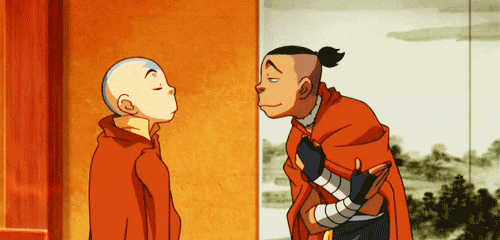
References
Fried 2020, ‘How to Get Around the Great Firewall of China’, URL: https://toomanyadapters.com/get-around-great-firewall-china/.
Ren, Y 2018, ‘Know Your Chinese Social Media’, URL: https://www.nytimes.com/2018/11/19/fashion/china-social-media-weibo-wechat.html.
Solon, O 2017, ‘China cracks down on VPNs, making it harder to circumvent Great Firewall’, URL: https://www.theguardian.com/technology/2017/jan/23/china-vpn-cleanup-great-firewall-censorship.
The Guardian 2018, ‘The great firewall of China: Xi Jinping’s internet shutdown’, URL: https://www.theguardian.com/news/2018/jun/29/the-great-firewall-of-china-xi-jinpings-internet-shutdown.
Wang, Y 2020, ‘In China, the ‘Great Firewall’ Is Changing a Generation’, URL: https://www.politico.com/news/magazine/2020/09/01/china-great-firewall-generation-405385.
Yang, Q & Liu, Y 2014, ‘What’s on the other side of the great firewall? Chinese Web users’ motivations for bypassing the Internet censorship’, Computers in human behavior, vol. 37, pp. 249-257.
10 notes
·
View notes
Text
Week 10: Social Gaming
Aha. When it comes to the word ‘game’, it triggers our interest as who doesn’t like to have fun? Games have been developed into social gaming in this digital era. A few years ago, social gaming really took off on Facebook, titles with large audiences (Community BUFF 2018).

Ayogo (2010) proposed that:
Social games have the obvious common features of being multi-player and being based on social platforms. — Nick O’Neill from Social Times
One of the most important elements of social gaming is the social part (Community BUFF 2018). Social games are generally structured around more intimate interactions between players. Now, most of the social games incorporate in-game purchases feature for this genre of games to monetize their efforts.

This brings us to the debate of ..
Are gaming communities becoming less about play and more about monetization?
First, we look at the primary monetization models used by game developers and publishers in Asia which fall under three categories free-to-play (F2P), premium, and subscription, stated by Niko Partners (2020). F2P games provide players free access to a significant portion of the game, and revenue comes from advertisers or from users paying for additional in-game items and content. Premium games allows players to purchase additional downloadable content (DLC) or expansion content after paying a one-time fee to access the game while subscription games is where players pay a monthly fee to access an individual game or selection of games with DLC and expansion content. As F2P is the most popular model which accounted for 80% of all digital games revenue in 2019, the blog will focus on the F2P game example.
Free-to-play (F2P)
Fortnite is described as biggest console Free-to-play game of all time, both in terms of revenue and monthly active players (Portugal 2018). It brought Epic Games more than $300 million a month in 2018 with the game’s slick monetization system. Fortnite generates revenue through two monetization mechanics: microtransactions & the latest hot trend in F2P, “Battle Pass”. Microtransactions allow players to purchase cosmetic items in game’s shop of their choice such as character skins, emotes or dances. The real money maker of Fortnite is Battle Pass that gives player access to up to 100 tiers of rewards, including exclusive customization items, V-Bucks (the in-game currency) and XP boosts. Players can go with free Battle Pass with scarce rewards at very few tiers or $9.50 premium Battle Pass where they get rewards at every tier up to 100, or the $28 premium pass which comes with 25 additional tiers. Fortnite is based on a seasonal approach where each season lasts about 3 months and new contents will be released along with new Battle Pass.
youtube
Fortnite has been a successful social game that engage its consumers with its regularly updated contents and rewards that can be purchased at a reasonable pricing. As now there are too many games, players are becoming more hesitant to spend a large amount of money for a game they don’t know and are moving towards other options (Portugal 2018). In fact, developments costs exploded in recent years which became a challenge for the gaming industry to respond to consumers’ changing habits and expectations while covering their costs. Thus, today the gaming communities can be said to be a good mixture of monetization and play, because only if there is enough money, only then there will be good release of game play.

Well, from my view, if you have the ability to make certain in-app purchases and it gives you the pleasure to have fun and be cool in the game, you are spending your own money on your happiness, so why not? This could also certainly aid the development of gaming industry. But if your financial stability doesn’t allow you to do so and yet you are still obsessed with it then it is another story. In person, I would spend some money in game too to “purchase” more fun but it is just some trivial amount I could afford and I ensure I would not go too far. For some professional gamers, it can make sense as they are probably making a living out of it and they have sponsors. I guess it is about how you find the balance in game and in your life. Of course, the game developers also play the role of monetizing them in a more subtle and acceptable ways. Happy gaming everyone!

References
Ayogo (2016), What Exactly are Social Games?, URL: https://ayogo.com/blog/what-exactly-are-social-games/.
Community BUFF (2018), What exactly are social games and what makes them different?, URL: https://medium.com/buff-game/what-exactly-are-social-games-and-what-makes-them-different-e24623382558.
Niko Partners (2020), From playing to paying: The art of monetizing games in Asia, URL: https://nikopartners.com/from-playing-to-paying-the-art-of-monetizing-games-in-asia/.
Portugal (2018), Evolution of video game monetization: from Premium to Games as a Service, URL: https://www.lucienportugal.com/video-game-monetization-premium-to-games-as-a-service/.
4 notes
·
View notes
Text
Week 9: Fandom
Chin (2020) states that:
“Most people are fans of something.” (Gray, Sandvoss & Harrington, 2007)
Fandom functions as an alternative social community whose members hold a set of common practices that are associated with collective reception and the joint construction of meanings (Lacasa, Zaballos & Fuente Prieto 2016). The fans also take an active stance and create their own culture. A spark can cause someone to enter this alternative social community which can generally extend to TV shows, music, sports, games other than pop cultures.

Now, the question is, are fandom being toxic?
Personally, I think there is a border line between what makes up a healthy or toxic fandom. That line could be hard to defined due to different personal values. However, Lefler (2020) indicates that good fandom is healthy and appreciative where good fans support each other in a collaborative community and work to build each other up. Toxic fandom is the opposite. Fandom becomes toxic when fans attack other fans with purity tests and their criticism of some aspect of the show is framed in exaggerated emotional terms. What is being said is toxic fans are essentially the abusive party in an abusive relationship with the content they are a fan of. They aren't just there to celebrate it, but to control it and neg it.
youtube
In particular, online audiences cultivated by pop stars are using hashtags as weapons to harm rival idols (Cragg 2016). Earlier in 2016, Miley Cyrus died according to Twitter with the trendy hashtag #RIPMileyCyrus. This was later found to be Miley’s Twitter-only death and she is very much alive pop star. The hashtag was traced back to a fallout between fans of Bieber and those of K-Pop boyband Exo whom both proclaim their idols were more popular after the two performed on the same night in separate venues. A fan of Miley, perhaps noticing an opportunity to throw the cat in among the already excitable pigeons, made some fairly derogatory comments about K-pop fans, and the hashtag #RIPMileyCyrus emerged shortly after. This led to the criticism of hashtags are being used by groups of fans – “fandoms” – not to promote stars, but as weapons in the murky world of online wars.
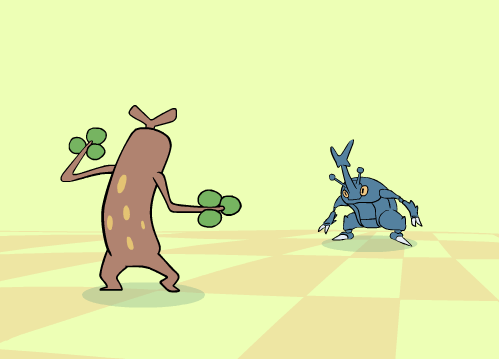
What I can conclude is one should draw a line when involving themselves in the fandom community so it wouldn’t turn into a toxic fandom.
References
Chin, B 2020, ‘Week 9: Fandom’, MDA20009 Digital communities, Learning materials via Canvas, Swinburne University of Technology, 3 November, viewed 7 November 2020.
Cragg, M 2016, ‘#RIPMileyCyrus and the rise of online fan wars’, The Guardian, 18 August, viewed 7 November 2020, <https://www.theguardian.com/media/2016/aug/18/hashtags-hatred-ripmileycyrus-rise-online-fan-wars >.
Lacasa, P, Zaballos, LM & Fuente Prieto, J de la 2016, ‘Fandom, music and personal relationships through media: how teenagers use social networks’, IASPM Journal, vol. 6, no. 1, pp. 44-67.
Lefler, R 2020, What's Toxic Fandom, and What Creates It?, viewed 7 November 2020, <https://reelrundown.com/misc/5-Factors-that-Can-Cause-Toxic-Fandom-to-Arise#:~:text=Toxic%20fandom%20is%20the%20opposite,framed%20in%20exaggerated%20emotional%20terms.&text=This%20tends%20to%20happen%20when,%2C%20poseurs%2C%20or%20casual%20fans.>.
12 notes
·
View notes
Text
Week 8: Crowdsourcing & Crowdfunding $$
Crowdsourcing
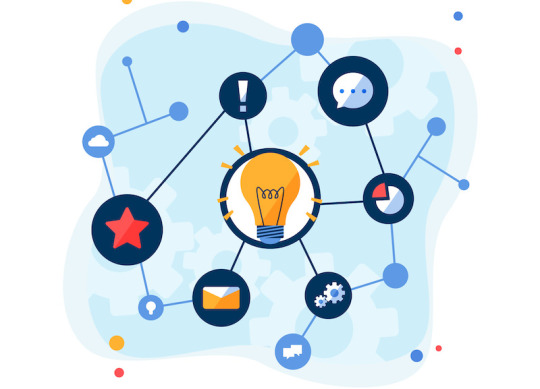
Crowdsourcing can be an extremely powerful tool if leveraged in the right place at the right time (White 2019). It is a form of collective wisdom which enabled a creative mode of user interactivity through the web technology to collect data, information, ideas and talents, particularly driving the human capital to solve the problems in a timely and less costly manner (Chin 2020).
youtube
One of the companies that is killing it with crowdsourcing is LEGO, who established the LEGO Ideas platform (Planbox 2018). With this platform, any user can submit idea for new LEGO sets and once a user’s idea is selected, the person can produce the idea into reality with the LEGO team plus the person also gets a royalty on net revenue. The LEGO Ideas platform not only supports new idea generation, but it also enables LEGO to validate a demand for such ideas.

Crowdfunding

While crowdsourcing seeks information or intelligence, crowdfunding seeks money to support individuals, charities, or start-up companies (Hargrave 2019). According to Smith and James (2020), crowdfunding makes use of the easy accessibility of vast networks of people through social media and crowdfunding websites to bring investors and entrepreneurs together. Of course, this extends to the purpose of charities where money is raised through social media and crowdfunding websites as well.
youtube
Remember earlier on this year, a massive explosion hit Beirut in Lebanon on 4th August. Impact Lebanon (2020) states that a large part of the city became rubble and many lives were lost. This is where JustGiving came in as a platform that allows for crowdfunding to provide some relief to those afflicted by the calamity. One of the campaigns raised is Disaster Relief for Beirut Explosion targeting for £7,500,000. Personally, I have donated an amount to help those in need through this crowdfunding. Essentially, crowdfunding could be a great platform to raise the small amounts of capital from a large number of individuals to finance a new business venture or donate for charities (Smith & James 2020).
youtube
References
Chin, B 2020, ‘Week 8: Crowdsourcing & crowdfunding’, MDA20009 Digital communities, Learning materials via Canvas, Swinburne University of Technology, 27 October, viewed 29 October 2020.
Hargrave 2019, ‘Crowdsourcing’, URL: https://www.investopedia.com/terms/c/crowdsourcing.asp.
Impact Lebanon 2020, ‘Disaster Relief for Beirut Explosion’, URL: https://www.justgiving.com/fundraising/lebanon-relief?fbclid=IwAR04i-xnqayteN4y3a3gHOIhF3TcRDEBMUWddkcLYGDquUpNRVa1n2IQ3wg.
Planbox 2018, ‘4 Companies That are Killing It with Crowdsourcing’, URL: https://www.planbox.com/4-companies-that-are-killing-it-with-crowdsourcing/.
Smith & James 2020, ‘Crowdfunding’, URL: https://www.investopedia.com/terms/c/crowdfunding.asp.
White 2019, ‘What Is Crowdsourcing and How Does It Work? Definition and Example’, URL: https://www.thestreet.com/personal-finance/education/what-is-crowdsourcing-15026002.
9 notes
·
View notes
Text
Week 7: Public health campaigns & communities
COVID-19, the evil, vicious, wicked, bad virus that brought the whole 2020 into a disaster. My beautiful, wonderful and fantastic plans were cancelled because of this COVID-19. What’s utmost is this virus has caused a lot of deaths and put people in sorrow and pain.

This has brought the concerns to the world health facilities and organizations to implement public health campaigns to spread the right health knowledge and guidance to the communities. In this digital era, these public health campaigns are widely done through the digital communities such as Facebook, Twitter, Instagram and et cetera. Thus, this brought us to the questions below.
How digital communities influence public health campaigns and communities?
youtube
Nowadays, social media and technologies are playing a greater role than ever in the information sharing necessary to build health care capacity globally (Thompson 2016). Since the outbreak of COVID-19, millions of people are heeding the advice of health experts to wash their hands. In relation to this, WHO invites people from anywhere to join in and show how they are following WHO guidance and the right steps to prevent the spread of COVID-19 (World Health Organization 2020). #SafeHands challenge is launched by WHO across their social media channels to raise awareness on how to perform hand hygiene properly. This has actually prompted a lot of people including celebrities to take part and made this spread of health information rather successful.

As you can see, the health industries are increasingly turning to social media to support, promote and increase the spread of data and information in order to improve both personal and community health practices (Howard 2018). There are other effective public health social media campaigns other than campaigns about COVID-19. For instance, the Ice Bucket Challenge social media campaign raised by ALS Association that caused a wave across the social media channels. Another influential social media campaign is #KnowYourLemons designed by Worldwide Breast Cancer organization to teach women and men to easily recognize the 12 most common breast cancer symptoms through an image illustrating the twelve signs of breast cancer. The image was spread like wildfire over social media.

What is the risk behind this?
However, there pose a potential threat to public health as false and misleading medical information about a range of diseases have been circulating widely on social media and spread rapidly and effectively (The Union for International Cancer Control 2020). Currently with the global coronavirus pandemic, the dissemination of fake news and the associated risks have reached a new dimension. WHO reported an ‘infodemic’ as early as 2 February 2020 that the ‘infodemic’ surrounding the coronavirus that makes it difficult for people to search for reliable guidance and take the appropriate measures, without resorting to panic or falling into complacency. The uncertainties and fears caused by the lack of knowledge of the disease, as well as by the measures of social distancing used to contain it, mean that this threat to public health is potentially even higher.
“False information not only is misleading and fuels anxiety but is also potentially dangerous when it suggests prevention measures or cures that are dangerous to a person’s health.” - Julie Torode, Director of Special Projects at UICC
youtube
References
Howard 2018, ‘10 Effective Public Health Social Media Campaigns’, URL: https://strategicsocialmedialab.com/10-effective-public-health-social-media-campaigns/.
The Union for International Cancer Control 2020, ‘Fake news: a threat to public health’, URL: https://www.uicc.org/news/fake-news-threat-public-health.
Thompson 2016, ‘How Social Media Is Transforming Medical Care In The Developing World’, URL: https://www.fastcompany.com/3057869/how-social-media-is-transforming-medical-care-in-the-developing-world.
World Health Organization 2020, ‘Handwashing challenge’, URL: https://www.who.int/campaigns/connecting-the-world-to-combat-coronavirus/safehands-challenge/handwashing-challenge.
12 notes
·
View notes
Text
Week 6: Activism & Protest

The picture/gif above generally gives you an idea of what an activism looks like. Activism takes place when you feel so enraged over an issue or behavior that does not quite match with the principles, ethics, moral or value you believe in and you decided to protest and bring this issue to a bigger place. A bunch of people who feel the same with you will join the protest to make the world witness and actually do something right about it.
The social technologies nowadays have actually brought activism to different forms compare to the old fashion walk on street with posters or cardboards.
One most noticeable and common protest on social media is the #Hashtag activism.
#Hashtag activism
Hashtag activism is a term coined by media outlets which refers to the use of Twitter’s hashtags for online activism. The term can also be used to refer to the act of demonstrating support for a cause through a like, share, retweet and etcetera, on any social media platform such as Facebook or Twitter (Mbabazi 2018).
Alternatively, the term is used to refer to the use of hashtags on multiple social media platforms to plan marches and protests, share stories, connect communities, and ultimately, drive social change.
Here is how it looks like when hashtag activism is being used for #ASLIceBucketChallenge.

(Picture: #ASLIceBucketChallenge)
The Facebook or Twitter newsfeed everywhere were filled with people having ice and water poured over their heads, even the celebrities. My favorite “Ironman” also took part in this ice bucket challenge hashtag activism and called upon my another favorite “Thor” to complete this challenge.

#ASLIceBucketChallenge was the first of the viral charity challenge hashtags, raising money and awareness for the ALS Association, and it set a precedent that many have tried to match in the years since. The ALS Association has received more than $41.8 million from more than 739,000 new donors between July 29 and August 21 2014 (Hales & Calderwood 2017).
This event was also my first engagement with digital activism by shooting an ice bucket challenge video with my friends and uploaded it online to show my our support for the group. We were proud to help in this donation and contribution to bring light to those in needs.

Personally, now I think activism and protest has been more powerful than before due to the tech of social that allows more people in this world to hear the voices. With the helps of social technologies, activism and protest can be more creative and inspiring that spark the light in people to take actions against certain issue. The sounds can be spread further, and the light can grow into a flame.
References
Mbabazi 2018, ‘Hashtag activism: Powerful or pointless?’, URL: <https://www.newtimes.co.rw/society/hashtag-activism-powerful-or-pointless>.
Hales & Calderwood 2017, ‘8 Massive Moments Hashtag Activism Really, Really Worked’, URL: <https://www.globalcitizen.org/en/content/hashtag-activism-hashtag10-twitter-trends-dresslik/>.
11 notes
·
View notes
Text
POLITICS IS JUST A BIG MESS.
Week 5: Political Engagement
This week I’m digging into politic engagement topic. It’s a bit hard for me because I don’t engage in politic related stuff a lot and I’m not interested about it. Well let’s get started anyway.
Political Engagement

Why are some people highly engaged by political communication, while others are not? Why do some people believe spurious claims of political actors while others approach them all with cynicism? What are the pathways that lead from communication to participation, and how do we understand patterns of participatory behavior. It is this complex but important area of research that this project tackles.
According to Afromeeva, Liefbroer and Lilleker (2020), political engagement is defined here as a cognitive process. When the brain becomes stimulated by external stimuli, in this case relating to politics, elaboration occurs. Elaboration here means the connecting of thoughts, recognizing the new information as important and relevant, a process that leads to having an attitudinal reaction. Political engagement is a necessary precursor for political participation and thus important for a vibrant civic culture.
An engaged citizenry is often considered a sign of a healthy democracy (Wike & Castillo 2018). High levels of political and civic participation increase the likelihood that the voices of ordinary citizens will be heard in important debates, and they confer a degree of legitimacy on democratic institutions. However, in many nations around the world, much of the public is disengaged from politics.
Social Media and Politic Engagement

More than a decade ago, information and communication technologies dramatically changed the world (Ahmad, Alvi & Ittefaq 2019). For instance, new media and technology have changed the interpersonal interaction, communication patterns, and social and political discussions. Media and communication scholars, political scientists, sociologists, and international relations scholars have conducted hundreds of studies on various aspects of social media usage (Golan, Arceneaux, & Soule, 2019). The Internet is playing a significant role in providing information to the public on political events, engaging its users and encouraging them to get involved in offline political activities. The Internet has become vital for political discussions and political participation.
Millennials are the most active users of the Internet and social media (Ahmad, Alvi & Ittefaq 2019) . Online activities related to politics are useful and encourage youth to participate in political events. Internet use, political knowledge, and political participation are associated with one another. Organizations such as political parties are trying to keep up with this changing environment (Effing, Hillegersberg & Huibers 2011).
The early politician who successfully used social media for political engagement is Barack Obama.
Barack Obama
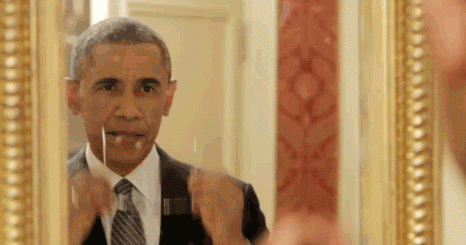
Four years after Facebook launched in 2008, we saw the first big step in using the internet to run a political campaign (Contentgroup 2020). As Barack Obama worked his way across the United States throughout 2007 and into 2008 to promote his candidacy, he had a little trick up his sleeve – Facebook. Using social media expanded his reach increasing voters, as well as strengthening his pre-existing audience.
In 2011 for the first time in political history, a presidential re-election bid was announced via a YouTube video. He also threw in his own hashtag, #Obama2012 – clearly he was a social media natural through and through.
He uses social media throughout his campaign grew drastically and changes in the way people used these platforms gave Obama a new podium to speak from, with more people listening. With the world’s attention, Obama began to also interact with the public via social media; he conducted several Q&As on Twitter and even used the more obscure discussion website, Reddit, for an ‘Ask Me Anything’. In a clever move, Obama now had a pool of engaged individuals on his side of the election trail.
Involvement through Empowerment. This was the mission of the Barack Obama campaign (The Dragonfly Effect n.d.). The first political campaign in history to truly harness the power of social media to spread the word, garner support and get people engaged. “No other candidate has ever integrated the full picture the way [Obama] has, that’s what’s really new about his campaign,” said Michael Malbin, executive director of the Campaign Finance Institute.
#BlackLivesMatter

Another political engagement that recently arises significantly this year is The Black Lives Matter.
The Black Lives Matter (BLM) movement began online when the co-founder Alicia Garzia shared the hashtag ‘#BlackLivesMatter’ following the murder of a young black boy named Trayvon Martin in 2013 (Gawthrop & Illingworth 2020). By taking its initial stance on social media, the BLM movement has relied on the social capital of platforms, such as Twitter and Facebook, in order to spread its message. Today, the BLM movement, following the tragic murder of George Floyd, is now a global human rights movement, with protests taking place daily in all 50 states of America, as well as in over 20 countries worldwide.
Countless eyewitness accounts of police brutality and racism have surfaced on social media in the form of videos and images that have been captured on mobile phones. Footage of George Floyd’s murder was captured by a bystander and went viral on Facebook. While it might be tempting to say this was a good thing, as it raised awareness and caught the attention of people who until now believed that racism was a thing of the past, it is not that simple. It is somewhat interesting but mainly upsetting to imagine what would have happened to the memory of George Floyd if we did not have social media. The story might have been picked up by a few local news outlets, but it is quite likely that interest would have faded quickly, and George Floyd would have probably become just another in a long list of forgotten black people in America killed unjustly at the hands of the police.
In conclusion,

So yeah, social media is becoming important tool for political participation and engagement. Interaction in social media has a strong influence on the propensity to participate in politics. The Internet and social media provide an opportunity to the young population for political discussion through various online groups, pages, and accounts. However, there’s still a lot of dark side with using the social media for political engagement, I won’t be discussing about it here. If interested, search for other’s blog from our classmate! I know some of them discussed about this.
12 notes
·
View notes
Text
Week 5: Political Engagement
Political engagement can be understood as political participation which refers to ‘voluntary activities undertaken by the mass public to influence public policy, either directly or by affecting the selection of persons who make policies.’- C.J. Uhlaner
Why is social media popular in politics nowadays?
Nowadays, the use of social media for political participations have significantly grown. The reasons behind these are because social media such as Facebook, YouTube and Twitter are influencing the political landscape (Chin 2020). Participation through social media give the politicians access to larger audience and more importantly the younger audience.
The following portraits some of the politicians’ social media.

(Picture: Donald Trump’s Twitter page)
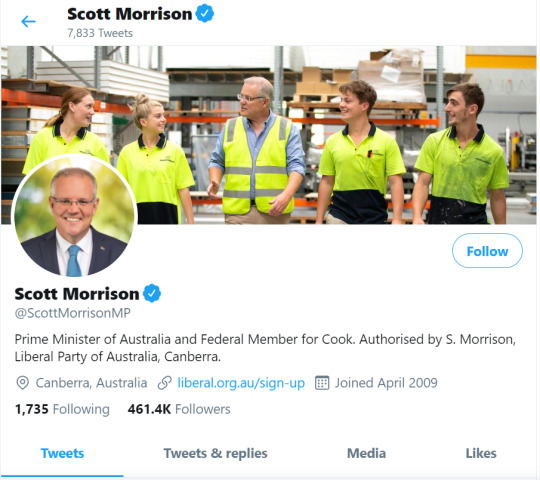
(Picture: Scott Morrison’s Twitter page)
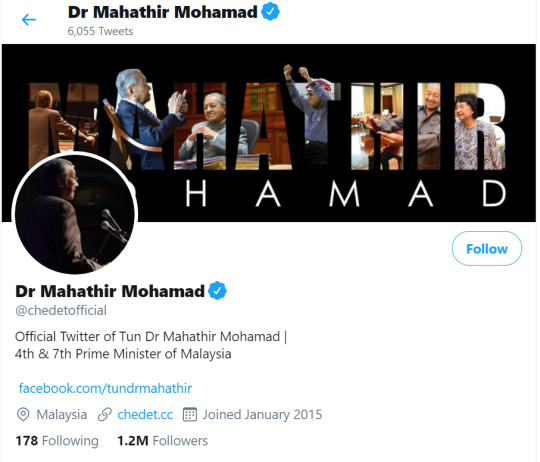
(Picture: Dr Mahathir Mohamad’s Twitter page)
According to Abdulrauf, binti Abdul Hamid and bin Ishak (2017), social media has offered youths with new ways of political participation and democratic citizenship and it has significantly influenced political participation among younger generations. A former president, Barack Obama was described as too good at social media in term for civic engagement (Bogost 2017). His Obama’s campaign was rather successful of creating two-way conversation rather than broadcasting information (Chin 2020).

How does this change the ways it was?
Politics were just a dull topic and a one-way communication where the politicians keep throwing some fancy speeches at the audiences from my view. But this norm has changed upside down when politicians start discussing political plans and engage with their audiences via social media. The outcomes are active responses from the youth and contributes to the democratic process through youth online political participation which is difficult to be achieved by traditional political participation (Abdulrauf, binti Abdul Hamid & bin Ishak 2017). One good example lately is new political party, MUDA registered by Syed Saddiq Abdul Rahman where Syed Saddiq used the hashtag #MUDAsudahMULA on Malaysia Day, which was Malay for “Muda has started”, prompting speculation from his supporters (Prakash 2020). Subsequently, several youth leaders involved in discussions to form the political party have also been tweeting using the same hashtag, outlining their hopes for the new generation of politicians. Today, the hashtag culture allows political changes and news spread fast and far than it could ever be.

(Picture: Syed Saddiq’s Twitter post)
The Dark Sides.
Just as good as it can be, things could go wrong. The famous ‘Cambridge Analytica scandal’. Based on Lapowsky (2019), the story was like this “Cambridge Analytica had purchased Facebook data on tens of millions of Americans without their knowledge to build a “psychological warfare tool,” which it unleashed on US voters to help elect Donald Trump as president.” The outrage of users, lawmakers, privacy advocates, and media pundits caused Facebook’s stock price fell immediately and boycotts began. People or politicians may continue to use social media or the data from it as a corruption tool or to manipulate the politics just like how Cambridge Analytica did.
youtube
(Video: Facebook's Cambridge Analytica data scandal, explained)
I am still no fan of politics as there are just too much conspirations and scandals going on. But voices should be raised when justice is needed, at least that’s what I thought. Maybe we young people should really unite and do things right, and like one classmate mentioned, we could give the new political party, MUDA a chance and see what it could achieve.
References
Abdulrauf, A.A., binti Abdul Hamid, N. & bin Ishak, M.S. 2017, "Cognitive Engagement and Online Political Participation on Social Media among Youths in Malaysia: The Moderating role of Political KnowledgePreview the document", SHS Web of Conferences, vol. 33, pp. 85.
Chin, B 2020, ‘Week 5: Digital citizenship 1: political engagement’, MDA20009 Digital communities, Learning materials via Canvas, Swinburne University of Technology, 29 September, viewed 3 October 2020.
‘How Cambridge Analytica Sparked the Great Privacy Awakening’, URL: https://www.wired.com/story/cambridge-analytica-facebook-privacy-awakening/.
‘#MUDAsudahMULA: Syed Saddiq says will register new party with RoS today’, URL: https://www.malaymail.com/news/malaysia/2020/09/17/mudasudahmula-syed-saddiq-says-will-register-new-party-with-ros-today/1903941.
‘Obama Was Too Good at Social Media’, URL: https://www.theatlantic.com/technology/archive/2017/01/did-america-need-a-social-media-president/512405/.
‘Political Participation’, URL: https://www.sciencedirect.com/topics/social-sciences/political-participation.
8 notes
·
View notes
Text
YEAAA TUMBLR HELP YOU IN SEARCHING FOR PEOPLE HAVING SAME INTEREST WITH YOU SUCH AS THE MANGA “HAIKYU!!” !!!
Week 4: Is Tumblr a Blog or a Social Networking Site?
I have no idea on what is and the existence of Tumblr before I enrolled in MDA20009 unit.
So what is Tumblr?

Tumblr is a blogging and social media tool that allows users to publish a “tumblelog”, or short blog posts (BigCommerce 2020). Tumblr refers to itself as a platform for short-form microblogging, also known as tumblelogging, a name that predates Tumblr itself (Boone 2020).
Tumblr’s major differentiator is the free-form nature of the site and the ability of users to heavily customize their own pages (BigCommerce 2020). This is the exception to the rule, as nearly all other social networks have standardized profile pages with limited design flexibility. So here is the debate on whether Tumblr is used for blogging or is it a social networking platform? Let’s dig into on what is blog and social networking first.
What is a Blog?

According to Duermyer (2020), blogging refers to writing, photography, and other media that’s self-published online. Blogging started as an opportunity for individuals to write diary-style entries, but it has since been incorporated into websites for many businesses. The hallmarks of blogging include frequent updates, informal language, and opportunities for readers to engage and start a conversation.
Blogs need frequent updates (Skrba 2020). Good examples of this include a food blog sharing meal recipes or a company writing about their industry news.
Blogs also promote reader engagement. Readers have a chance to comment and voice their different concerns and thoughts to the community. Blog owners update their site with new blog posts on a regular basis.
What is a social networking site?

A social networking site is an online platform that allows users to create a public profile and interact with other users on the website (Techopedia 2020).
Social networking is the use of Internet-based social media sites to stay connected with friends, family, colleagues, customers, or clients (Kenton 2020). Social networking can have a social purpose, a business purpose, or both, through sites such as Facebook, Twitter, LinkedIn, and Instagram, among others. Social networking has become a significant base for marketers seeking to engage customers.
So which category does Tumblr falls in?
According to Boone (2020), Tumblr is part blogging platform and part social networking service, letting users create and post their own original content. Written entries, photographs, video clips or links to other Web sites – you can share all of these things with your friends and followers. Users subscribe to as many other users’ pages as they like, which show up on the user’s feed, or Dashboard. It’s also possible to give “notes” to other subscribers in several forms – you can reblog someone’s content on that user’s Tumblr site, “like” it, or reply. To further the social aspect, authors can opt to post their Tumblr entries simultaneously, or at least link to them, via other services, such as Facebook, Twitter and Instagram.
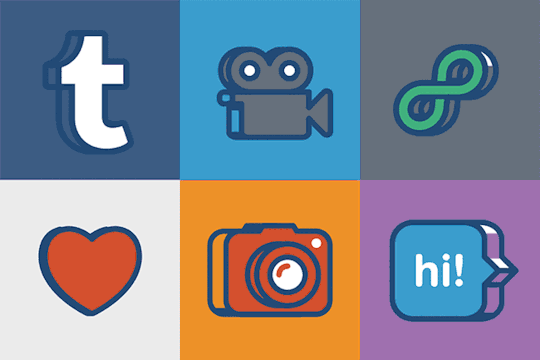
So what does users post on Tumblr? The content on Tumblr is enormously varied (Price 2019). You can find Tumblr blogs dedicated to everything from fashion to space exploration and millions of people engaging with each others. It’s more than just a place to share life updates, GIFs and pop culture memes (Driver 2019). On Tumblr, you get to find people who might have the same interest as you or maybe a place to find who connects the most with ourself.

In conclusion,
For me, Tumblr is both a blogging platform as well as a social networking site. User shares their personal interest, experience, ideas, views and fun stuff on Tumblr and allows multiple users to interact with them using the features that Tumblr provide such as “likes”, “comments”, “gif” and so on. It can be a blog for someone to share their life about, or it can be a social networking platform for people to share funny stuff and connects with each other.
20 notes
·
View notes
Text
Is Tumblr a blog or a social network site?
Tumblr. When we came across this term, the concept of ‘blog’ automatically flashed through our mind.

The question is, is Tumblr a blog or a social network site? This has always been a hot topic and become debates between people. Before we dig into this, we just need to fill in ourselves with the underlying concepts of both blog and social network site.
Someone explains what a blog is please.

Honestly, I have a skewed understanding of what a blog really is as there are just too many kinds of them. But don’t panic, I have done some research and readings that are going to help you and I to have a broad sense of what blogs can be.
Let’s just throw us some examples. The types of blogs that are commonly seen include:
1. Food blogs
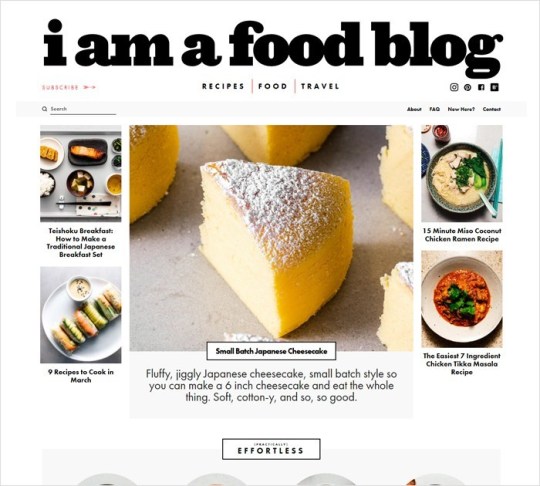
2. Music blogs

3. Fashion blogs

4. Fitness blogs

What are happening in these blogs are the taste making, cultural practices, community formation, inclusion and exclusion (Chin 2020). Marry & Twitterati (2011) describes that blogs are typically written in an informal and immediate manner like a speech, with audiences paying attention to them. In today’s era, blogs provide new avenues of this cultural expressions and make new connections among groups. Blogs satisfy a human desire for self-expression and meanwhile the human desire to be heard, to have an audience.
“A blog consists of more than words and images. It cannot be read simply for its writing, but is the sum of writing, layout, connections and links and the pace of publication.” – Jill Walker Rettberg
A social networking site.
Yes. This one I bet everyone has a really good idea of what it is. What is the very first social networking site you would think of when being asked? For me, it would be Facebook. Facebook is one of the most influential social networks worldwide, which was initially created by college students with the aim of connecting Harvard students (Barr 2018). They keyword here is connecting. According to Kenton (2020), social network sites are used for social networking, to stay connected with people. Social network sites could serve as social purpose or business purpose. There are many social network sites in this digital age to help people stay connected such as Instagram, Snapchat, Twitter and others.

Boyd & Ellison set out a clearer view of social networking services:
“Web-based services that allow individuals to
(1) construct a public or semi-public profile within a bounded system,
(2) articulate a list of other users with whom they share a connection,
and
(3) view and traverse their list of connections and those made by others within the system”
(Chin 2020)
Now, we can look at the big picture.

Is Tumblr a blog or a social network site?
Tumblr describes itself as “a space in between Facebook and Twitter” (Marry & Twitterati 2011). From the essence, Tumblr is a microblogging site that invite users to write more conversationally than they can on Twitter. Tumblr users could post text, photos, quote, link, chat, audio and video which can be grouped thematically. Tumblr also give users the room to design the appearance on your page, offering them a bunch of different layouts. Anonymity remains a main attraction of Tumblr where you can have some really quirky names that are not offered by the social network site. You can really be yourself here in Tumblr, blogging and reblogging about all kind of issues.
You think that’s it about Tumblr? A sole blogging site? Nahhhh
As pointed out by Walker Rettberg (2013), blogs are social. Most of the blogs allow and encourage the users to leave a comment, and almost all of them use links to sources and to other bloggers talking about similar topics. The defining feature of Tumblr is reblogging where any user can repost content from other user, peppering it with their own comments (Reeve 2016). Likes, reblogs, and comments pile up in a log of “notes” appended to the original post as they travel across the network’s feed. The very best tweaks spread further, reblogged over and over again, drawing attentions of multiple users, interacting with each other on these particular tweaks. It connects people who don’t know each other to passionate about similar interests they share or to laugh off at some funny jokes.

At this point, Tumblr is more than just a ‘blog’. It also connects people in a unique way. Tumblr intersects between blog and social network site. It makes a really good combination out of both.
youtube
(A video that walk you through the Tumblr world.)
References
Chin, B 2020, ‘Week 3: Platforms and analytics Part 1’, MDA20009 Digital communities, Learning materials via Canvas, Swinburne University of Technology, 15 September, viewed 26 September 2020.
Chin, B 2020, ‘Week 4: Blogging Practices, Part 1: What is blogging?’, MDA20009 Digital communities, Learning materials via Canvas, Swinburne University of Technology, 22 September, viewed 26 September 2020.
Cross, M. 2011. ‘Got Blog’ in Bloggerati, Twitterati: how blogs and twitter are transforming popular culture, Praeger, pp 37-50
‘Social Networking’, URL https://www.investopedia.com/terms/s/social-networking.asp.
‘The Secret Lives of Tumblr Teens’, URL https://newrepublic.com/article/129002/secret-lives-tumblr-teens.
Walker Rettberg, J. (2013), 'What is a Blog' ch1; and 'Blogging Communities and Networks', ch 3 in Blogging. (2nd edn)
‘WHEN DID FACEBOOK START? THE STORY BEHIND A COMPANY THAT TOOK OVER THE WORLD’, URL https://www.independent.co.uk/life-style/gadgets-and-tech/facebook-when-started-how-mark-zuckerberg-history-harvard-eduardo-saverin-a8505151.html.
13 notes
·
View notes